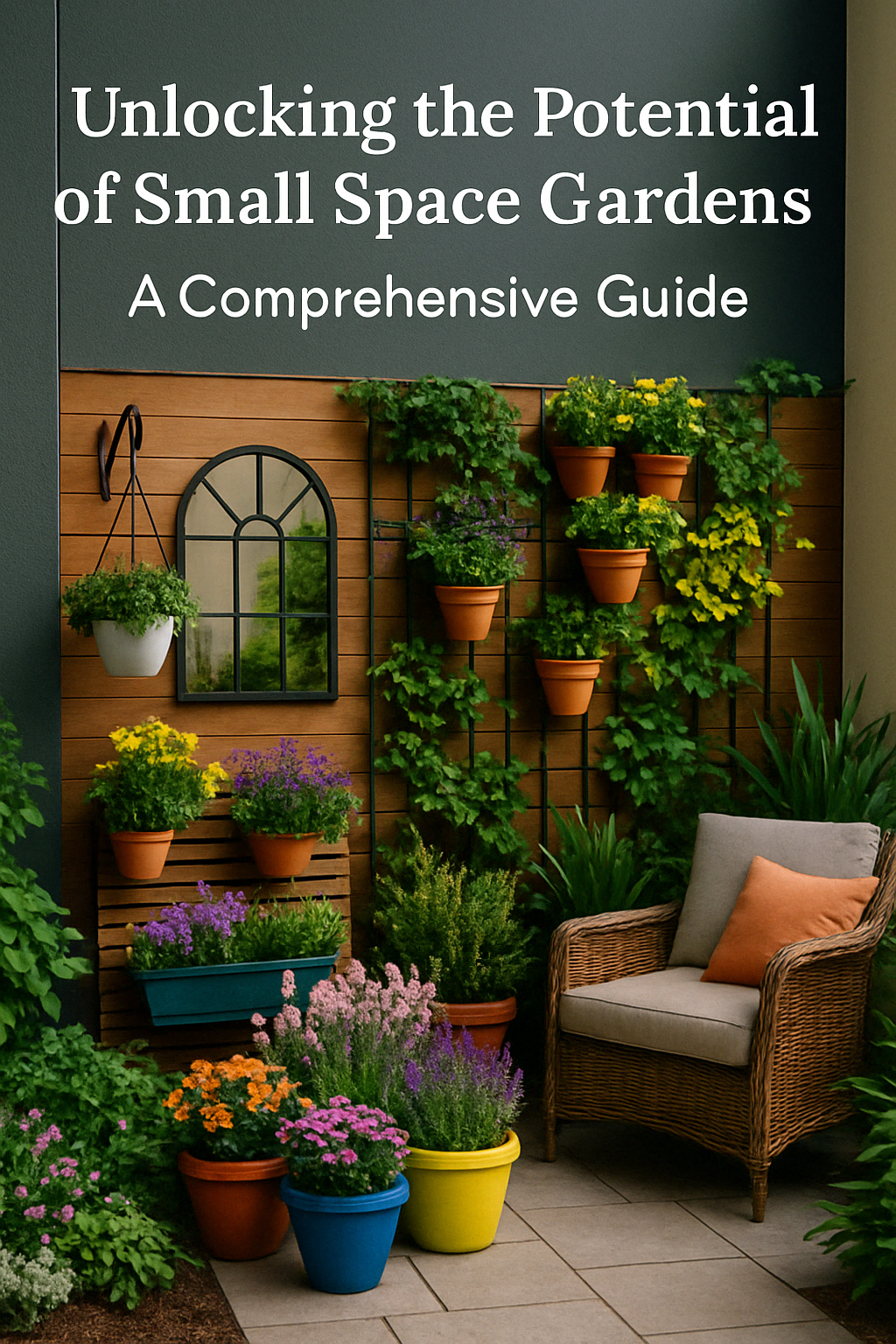Garden Design Ideas for Small Spaces: Layouts That Wow
Transform your balcony or patio into a lush retreat with this guide to small space gardening! 🌿 Discover creative vertical gardening ideas, clever plant selections, space-saving tips, and design tricks to maximize every inch. From colorful pots to reflective mirrors, learn how to unlock your garden’s full potential — even in the tightest spaces.
Joel L.
4/17/20253 min read


Unlocking the Potential of Small Space Gardens: A Comprehensive Guide
The Rise of Small Space Gardens
As urban living expands and property sizes decrease, the popularity of small space gardens has surged. These compact outdoor areas present unique challenges and offer numerous opportunities for creativity and innovation in garden design. Small space gardens require careful planning and a strategic approach to maximize their potential while navigating the limitations that come with confined layouts.
Designing with Vertical Gardening Techniques
What is Vertical Gardening?
In small space gardens, the need to effectively utilize every square foot is paramount. Vertical gardening provides a solution by allowing plants to grow upward rather than outward. Employing wall planters, trellises, or hanging pots creates an appealing aesthetic while conserving precious ground space. This method not only fosters plant health by increasing sunlight exposure but also introduces a captivating dimension to your garden design.
Plant Selection for Vertical Gardens
Choosing plants with compact growth habits, such as dwarf varieties, annuals, and perennials, ensures a lush display without overwhelming the area. By combining various textures, colors, and heights, you can enhance visual interest, ensuring your garden feels full and vibrant despite its size.
Crafting Visual Depth with Plant Grouping
The Layering Effect
Grouping plants by their height can significantly enhance the garden's visual appeal and create depth. This method involves arranging tall plants, such as sunflowers or hollyhocks, at the back of the garden bed, followed by medium-sized perennials like coneflowers, and shorter plants such as pansies at the front. This strategy not only ensures sunlight reaches all plants but also transforms an ordinary garden into a dynamic landscape.
Blooming Seasons and Structure
Consider the plants' growth habits and flowering times to ensure continuous visual interest. Mixing plants that bloom at different periods, such as early spring narcissi with summer delphiniums, enriches your garden's depth while maximizing space. Incorporating vertical structures like trellises with climbing plants adds another layer of interest.
Using Bright Pots for Accentuation
The Power of Colorful Pots
Bright pots serve as eye-catching accents in small gardens, contributing to the overall aesthetic. By strategically selecting vibrant planters, you can introduce a sense of vibrancy and dynamism. Consider contrasting colors for a dramatic effect, or match pot colors with your plants for a cohesive look.
Strategic Placement
Grouping pots of different heights and textures establishes layers that guide the eye and create depth. Bright pots placed near pathways or entry points can accentuate these areas, making them more inviting.
Mirrors: Creating the Illusion of Space
Reflective Strategies
Utilizing mirrors can transform small spaces into visually expansive areas by reflecting natural light and greenery. Placing mirrors against walls or fences eliminates hard boundaries, blurring the edges of the space. These reflections create a sense of depth and enhance the garden's ambiance.
Clever Positioning
Smaller mirrors placed throughout the garden can trick the eye into perceiving more depth. For example, mirrors at the end of narrow pathways extend the visual length, encouraging exploration and engagement.
Balcony Zoning for Functionality
Defining Functional Zones
Dividing your balcony into distinct functional zones enhances both aesthetic and usability. By carefully planning relaxing, dining, and gardening areas, a small balcony can feel more spacious and inviting.
Natural Dividers and Structures
Plant arrangements or vertical gardens act as natural dividers, creating a sense of separation. Elements like trellises, outdoor rugs, or folding screens can further establish boundaries while contributing to the decor.
Selecting the Right Plants for Limited Spaces
Plant Characteristics
For limited spaces, choose dwarf varieties and low-maintenance plants, such as succulents and ornamental grasses. These options require minimal upkeep and thrive in various conditions, making them practical for gardeners with limited time.
Sunlight Considerations
Assess available sunlight to ensure plant selections align with specific conditions. Shade-tolerant plants like ferns thrive in low light, while sun-loving geraniums require brighter spots.
Creating an Inviting Outdoor Room
Comfort and Aesthetics
Transforming your small garden into an inviting outdoor room enhances the living experience. Comfortable seating, vibrant cushions, and decorative accessories infuse personality into the space.
Lighting and Layout
Thoughtful lighting options like string lights or solar-powered garden lights provide illumination, adding charm and functionality. Vertical gardening solutions also contribute to the aesthetic appeal, making the garden feel more expansive.
In conclusion, small space gardens offer a wealth of opportunities for creativity and innovation. With strategic planning, innovative solutions like vertical gardening, and a thoughtful approach to design, even the tiniest outdoor area can blossom into a stunning and functional space.
